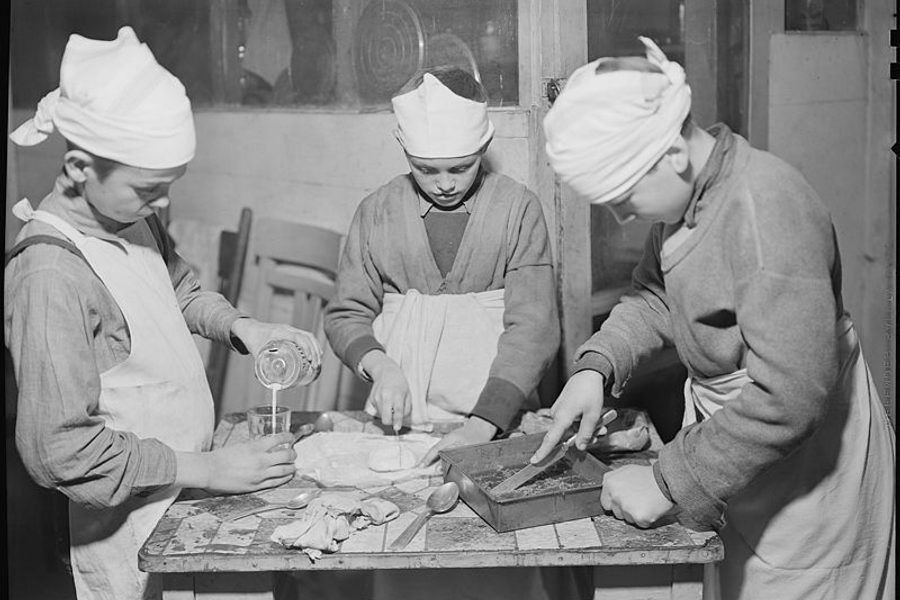
Food writer Michael Pollan is an evangelist for home cooking as path to healthy eating and food justice. In some of his bestselling books, Pollan criticizes feminists for the decline of home cooking in America.
Salon ran an excerpt from Emily Matchar’s new book, Homeward Bound: Why Women are Embracing the New Domesticity, under the headline “Is Michael Pollan a Sexist Pig?”
The interesting part of the lengthy excerpt can be compressed into a single sentence: Male industrialists drove the convenience food revolution and subverted home cooking before feminism ever got off the ground. The rest is verbiage that has almost nothing to do with Michael Pollan. If you want a blow-by-blow description of how male food barons and advertising executives undermined home cooking and sold Americans on convenience, check out Michael Moss’s “Salt, Sugar, Fat.”
Matchar defines “new domesticity,” as a social movement fascinated with “reviving ‘lost’ domestic arts like canning, bread-baking, knitting, chicken-raising, etc.” The excerpt in Salon is from a chapter called “Cupcake Feminists, Hipster Jam Canners, and “Femivores”: The New DIY Food Culture.”
Cupcake feminists? Elizabeth Cady Stanton would weep.
I’m a feminist who loves to cook. Its work, but it’s necessary and I get a lot of pleasure out of it. So, when my partner and I divided up the household chores, I got all the grocery shopping and cooking, and he got more dishes, vacuuming, ironing, and laundry. We both have demanding jobs, but we both place a priority on eating home-cooked meals as often as possible, to save money and to stay healthier. So, we divide up the work fairly. If he was the better cook and I was the better cleaner, we would have done it the other way around. The key is to divide the overall household work evenly.
Cooking is one of the most important things in my life – almost as important as feminism – but I don’t see cooking as a particularly feminist or un-feminist activity in itself. Matchar’s excerpt doesn’t do a very good job of explaining how canning specifically relates to women’s liberation. My mom and my grandmother did a lot of canning and I’d do it myself if I had a basement that could hold enough brandied peaches and spicy green bean pickles to survive the apocalypse. It’s not that big a deal. I’m baffled by women who want to build a social and political identity around it. All this talk of “urban homesteading” and “radical homemaking” puzzles me.
At least the “back to the land” movement in the 1970s promised real self-sufficiency off the grid. There was some dignity and coherence to the notion that you could walk away from an irredeemably corrupt society and build something new. Most people couldn’t make it work, and some of my parents’ friends got trapped in very restrictive gender roles as they tried to make a go of it, but at least the project made sense on its own terms.
Retro fads come and go, but Matchar thinks there’s more to the new domesticity than that. She claims that the new domesticity is a social movement with significant moral dimensions. Her subjects think that by knitting their own sweaters with sustainably raised yarn and raising a few chickens in the back yard, they are sticking it to the man. Hobbies are great, but devoting your life to the busywork of new domesticity as a political statement while still being 99 percent dependent on our industrial food and clothing systems seems like a copout. These new domestic women are just micromanaging their lifestyles in the middle of a corrupt society and thinking that’s somehow going to change things.
One of the shortcomings in Matchar’s essay is that she seems to run together food activism with new domesticity. Organizing a community supported agriculture program that connects farmers and eaters is food activism. Knitting and canning are new domesticity. The latter are inward-looking. They’re hobbies that have no practical place in home economics anymore. They’re fun, but they’re no substitute for the real work of social justice.




